About the Magazine
Policies
Dr.C. Juan Emilio Martínez Martínez
Editor Ejecutivo
(+53) 7874 5135
Magazine Director
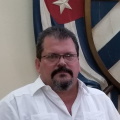
Dr.C. Sergio Luis Peña Martínez
Higher Institute of Design
University of Havana
Havana, Cuba
Scientific Director
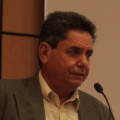
Dr.C. José Luis Betancourt Herrera
Higher Institute of Design
University of Havana
Havana, Cuba
Executive Editor

Dr.C. Juan Emilio Martínez Martínez
Higher Institute of Design
University of Havana
Havana, Cuba
Webmaster
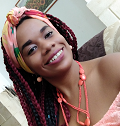
Ing. Laritza C. Valdés Martínez
Higher Institute of Design
University of Havana
Havana, Cuba
Editor

Lic. Nayelis Herrera Martínez
April Publishing House
Havana, Cuba
Editor
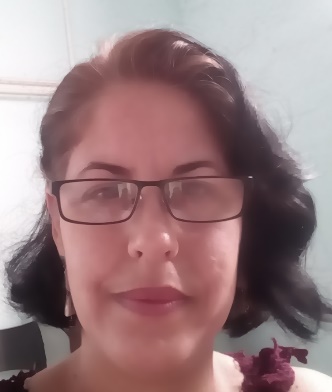
MSc. Yurima Calero Balmaseda
Higher Institute of Design
University of Havana
Havana, Cuba
Designer

MSc. Eviel Ramos Pérez
Higher Institute of Design
University of Havana
Havana, Cuba
Administrator
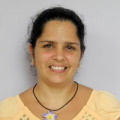
Lic. Amarilis Perez Matos
Higher Institute of Design
University of Havana
Havana, Cuba
SCIENTIFIC COMMITTEE / SUBJECT

Dr.C. Ernesto Fernández Sánchez
Scientific committee / Visual communication design
Higher Institute of Design
University of Havana
Havana, Cuba
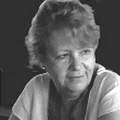
Dra.C. Mabel Matamoros Tuma
Scientific Committee / Industrial Design
Technological University of Havana J.A. Echeverria
Cuba

Dr.C. Gabriel Salazar Contreras
Scientific committee / Visual communication design
Metropolitan Autonomous University (Azcapotzalco)
Mexico City, Mexico
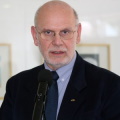
Dr.C. Luis Jorge Soto Walls
Scientific committee / Industrial design
Metropolitan Autonomous University (Azcapotzalco)
Mexico City, Mexico
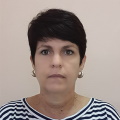
Dra.C. Milvia Pérez Pérez
Scientific committee / Design pedagogy
Higher Institute of Design
University of Havana
Havana, Cuba

Dr.C. Julio Frías Peña
Scientific committee / Industrial design
National Autonomous University of Mexico
Mexico City, Mexico

Dra. Alicia Álvarez Álvarez
Scientific committee / Visual communication design
APEC University (Action for Education and Culture)
Santo Domingo, Dominican Republic
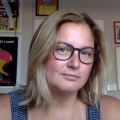
Dra.C. Valentina Rognoli
Scientific committee / Industrial design
Politecnico di Milano
Milano, Italy

Dra.C. María del Pilar Mellado LLuch
Scientific Committee / History of Design
Escola dArt i Superior de Disseny de Valencia
Valencia, Spain
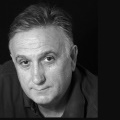
Dr.C. Manuel Lecuona López.
Scientific Committee / Industrial design
University of Valencia
Valencia, Spain

Dra.C. Brigitte Wolf
Scientific Committee / Industrial Design
University of Wuppertal
Wuppertal, Germany

Dra.C. Simone Formiga
Scientific Committee / Innovation in design
Pontifical Catholic University of Rio de Janeiro
Rio de Janeiro, Brazil
simone.formiga@infolink.com.br

Dr.C. José Korn Bruzzone
Scientific Committee / Visual Communication Design
University of Chile
Santiago de Chile, Chile

Prof. Dr. Arch. Franco Claudio Grossi
Scientific Committee / Sustainable Design
Kazan Innovative University
Kazan, Russian Federation
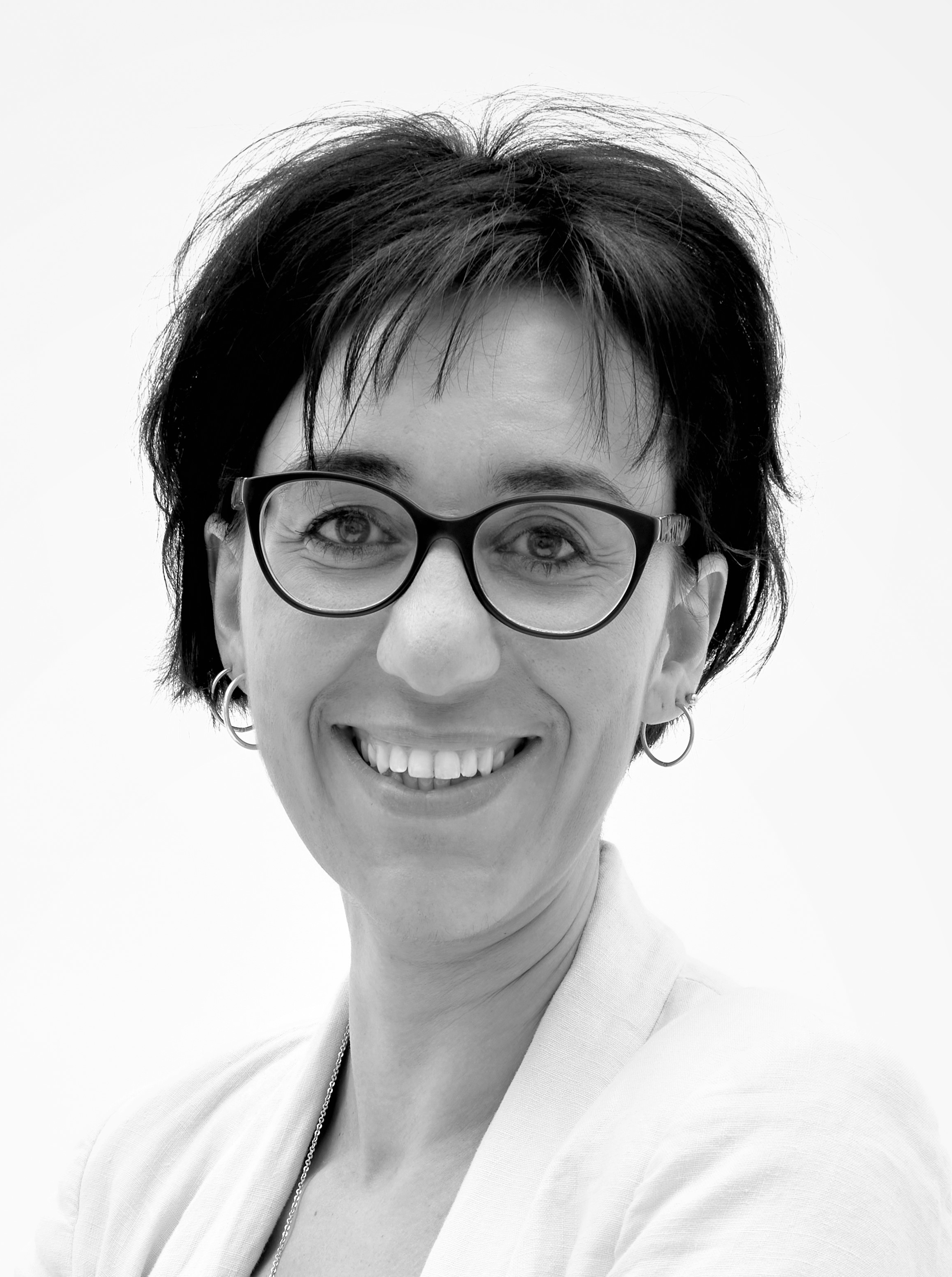
Prof.ssa Cecilia Rinaldi
Italian Academy of Art Fashion Design Florence
Florence, Italy
ceciliarinaldi@accademiaitaliana.it
Dr.C. Oscar Salinas Flores
Metropolitan Autonomous University
Mexico City, Mexico
Dra.C. Carmen Luz López Miari
Center for Psychological and Sociological Research
Havana, Cuba
Dr.C. Luis Carlos Paschoarelli
Paulista State University
Sao Paulo, Brasil
Dra.C. Alexis Caridad Méndez González
Technological University of Havana J.A. Echeverria
Havana, Cuba
PhD. Francesca Parotti
Higher Institute for Artistic Industries – Florence
Florence, Italy
Dr.C. Orestes Dámaso Castro Pimienta
Higher Institute of Design
University of Havana
Havana, Cuba
Dr.C. Eduardo R. Arrufat Corripio
Higher Institute of Design
University of Havana
Havana, Cuba
ORCID: 0000-0002-3238-5924Dr.C. Manuel Vega Almaguer.
University Mandume Ya Ndemufayo
Lubango, Angola
Dra.C. Ida M. González Hernández
Faculty of Chemistry
University of Havana
Havana, Cuba
Dr.C. Eduardo Dorta Baños
Higher Institute of Design
University of Havana
Havana, Cuba
Dr.C. Orlando Olivera Martín
Higher Institute of Design
University of Havana
Havana, Cuba
MSc. William F. Urueña Téllez
Pontifical Catholic University of Ecuador
Quito, Ecuador
MSc. Miriam Abreu Oramas
Higher Institute of Design
University of Havana
Havana, Cuba
MSc. Odalys Beceiro Gigato
San Gregorio Private University of Porto Viejo
Porto Viejo, Ecuador
MSc. Pedro E. García-Espinosa Carraso
National Improvement Center for Culture
Havana, Cuba
MSc. Humberto Juan Fabián Suárez
Cuban Association of Social Communicators
Havana, Cuba
MSc. Marlen Castellanos Uralde
Autonomous University of Ciudad Juarez
Juarez City, Mexico
Policies
- Focus and scope
The journal "A3manos" is a scientific journal published in digital format and continuous construction with biannual frequency that publishes under an open access policy through the automated system OJS (Open Journal Systems) operating under a license Creative Commons Reconocimiento-NoComercial 4.0 Internacional (CC BY-NC)
Access to the contents of the journal is completely free, as well as the reception, evaluation, processing and publication of the manuscripts received.
A3manos aims to disseminate both theoretical and application results related to national and foreign scientific production in the branches of Industrial Design, Visual Communication Design and other related areas in their relationship with design.
The journal publishes documents in the following sections:
- Editorial. Document written by the editor, a member of the Editorial Committee or an invited researcher about the content present in the journal and an event or activity of national or international impact or relevance, on the date the issue of the journal is published. This slogan was incorporated in number 10, corresponding to the year 2019, as part of the transformations in the design and structure of the publication. It was previously used as the motto of the IX International Congress of Design of Havana FORMA 2017.
- CONSCIENCE DESIGN Scientific research articles, design projects, exercise of the profession and university training of designers. They are documents that present, in detail, the original results of completed investigations.
- ISDi Project. Works on the development of the Higher Institute of Design and its impact on cuban society, as a project under permanent construction, showing its history without following an established chronological order.
- Designer and his work.Writings to recognize designers with an outstanding and applied work, projects with an impact on reality, national design awards, History of design highlighting the designer work.
- From the Academy. It includes short articles related to designer training, study plans, promotion of doctoral and master's thesis presented at ISDi and news about published books of design.
The magazine is primarily aimed at design researchers, professors and university students, as well as professionals in design, architecture, photography and art.
Works are published about the topics: Industrial design, Visual communication design, Design and it relationship with other professional areas, Theory and pedagogy of design, Sustainable design, Design and society, Design history, Design projects, National design awards , New technologies for design and the designer and his work.
- Section policies
Section Open files Indexed Peer reviewed Editorial X DESIGN CONSCIENCE X X X ISDi Project X X X Designer and his work X X X From the Academy X - Peer review processs
The articles received are initially evaluated by the Editorial Team to guarantee compliance with the minimum requirements. The criteria for its preliminary acceptance are the following:
- The works must be original and unpublished; correspond with the topics of the magazine; stand out for its originality, novelty and validity.
- The document must be suitably structured, showing a logical presentation with quality, rigor and good writing.
- The article must strictly comply with the drafting rules.
- The sources that serve as reference must be current, reliable and recognized within the scientific community.
The journal A3manos has established a policy of review by academic peers (peer review), under the double-blind modality for each article presented for publication that gives an opinion on it. It means that once an article has been received, the Editorial Team selects a pair of reviewers who anonymously and disinterestedly evaluate its scientific quality according to a set of established criteria.
The evaluators are peers both in knowledge of the subject, as well as in degrees, level of studies, recognition and academic or professional prestige equal to or greater than the author. The pair (2) of referees who evaluate an article are in no case part of the Editorial Team of the magazine.
The magazine has a Committee of Referees, made up of professionals from Industrial Design, Visual Communication Design and related areas with a strong link to design, with 75% coming from institutions outside the ISDi, both national and international.
The recommendation resulting from the opinion can be:
- Accept submission: Accepted for publication in its original form.
- Revisions needed: Accepted with optional suggestions.
- Resend for review: Conditioned to essential modifications made by the author.
- Rejected.
The main reasons that will lead to the rejection of an article by the reviewers are related to: the lack of originality and scientific novelty, the unreliability of the methods and procedures used, as well as the low quality and poor updating of the bibliographic references.
In case that there is disagreement between the two designated reviewers, the decision will be made by the Editorial Team, whether or not the article is published. The results of this process are unappealable. The Editorial Team and the experts who review the manuscripts, ensure that they maintain special care with the established ethical standards, avoiding conflicts of interest.
The review process lasts 90 business days. The time that the adjudicator has to review the work is 60 business days. The authors have a maximum period of 30 days (counted from the date on which the results of each evaluation are sent), to deliver the corrected version of their article according to the recommendations of the referees.
Before completing the editing process of an article selected for publication, it will be sent to the authors so they can review the correction changes made and communicate their agreement with them. Once your article is published, you will be notified by e-mail.
- Frequency of publication
The A3manos Magazine is a biannual magazine, published continuously so the articles that are in the editing process will be previewed. The closing date of each issue is the months of June and December. The first issue of each year covers the months of January-June and the second issue July-December.
Due to facts or events that warrant it, a special or extraordinary number may be published (E). - Open access policy
A3manos provides immediate Open Access to its content, based on the principle that offering the public free and open access to research contributes to greater global exchange of knowledge. Its content can be accessed freely and universally, at no cost to the reader, through the Internet or any other means.
The journal publishes in accordance with the principles of open access in the “diamond route”, so there are no charges for processing or publishing articles.
A3manos agrees with the Budapest Open Access Declaration - BOAI 2002, thereby "permitting users to read, download, copy, distribute, print, search or link to the full texts of articles, or use them for any purpose."legal, without any financial, legal or technical barrier, other than those that are inseparable from access to the Internet itself." https://www.budapestopenaccessinitiative.org/read/
A3manos operates under a Creative Commons Reconocimiento-NoComercial 4.0 Internacional (CC BY-NC) license that allows sharing (copying and redistributing the material in any medium or format) and adapting (remixing, transforming and building upon the material) on the condition that authorship is acknowledged and no commercial use is made of the materials.
From Volume 11, Issue 21, corresponding to the year 2024, this CC BY-NC 4.0 licence replaces the one used in previous issues, namely CC-BY-NC-SA
- File
A3manos follows the digital data preservation policy established by the Information Office of the University of Havana and uses its file preservation system. The journal uses the system of the University Library of the Higher Institute of Design of the University of Havana for the preservation of its issues. https://biblioteca.isdi.co.cu
Self-archiving
For the works published on the site http://www.a3manos.isdi.co.cu, the A3manos Magazine adheres to the self-archiving policy identified by the color Blue in Sherpa / Romeo, which implies that the post-print of Your articles in pdf format or editor's version (final version after peer review) can be archived by the authors or third parties in public repositories. - Ethics and good practices
A3manos follows the COPE guidelines (https://publicationethics.org/core-practices).
To publish in A3manos Magazine, authors must observe the highest standards according to publishing ethics. The publisher may conduct plagiarism checks at any time after receipt of the document.
The corresponding author by submitting a Declaration communicates the agreement of all authors that:- The work is original and unpublished, free of plagiarism, has not been published and is not under consideration for publication in another journal.
- All authors agree with the publication in the A3manos Magazine.
- Everyone who contributed important ideas and work has been appropriately acknowledged or included as co-authors.
- All addresses and institutional affiliations are complete and correct.
- All national laws regarding research have been complied with.
- The sources of financing and conflicts of interest have been duly declared.
- There is authorization from employers, people or companies that have intellectual property or copyrights and financial sources, among others, to publish all parts of the manuscript.
A published article that is later found that not fulfil all of these criteria may be withdrawn or, with the journal considerations, a correction can be published.
Below, some ethical aspects of strict compliance for the Journal are presented in detail.
Conflicts of authorship.
The first author of the scientific article (main author) is assumed to be the person who contributed the most to the development of the research. The remaining authors should be placed in order according to the importance of their contribution. To avoid problems associated with unjustified authorship, it is requested that the number of co-authors of a manuscript be in accordance with the amount of work done. Editors may request justification of the participation of all authors in the case of articles with numerous authorships.
Contribution of the authors: declare the personal contribution of each author to the research using the CRediT taxonomy
https://credit.niso.org/contributor-roles-defined/
The taxonomy of academic collaboration roles (CRediT) allows us to differentiate and recognize the contribution of each co-author in a scientific article.
This is used to represent the responsibilities that each of the co-authors performed in the scientific academic production of a research document. Its main objective is to provide credit to all those who participated in the investigation process. Starting with issue 22 (2024), this will be mandatory for authors to comply with when submitting an article.
-
Multiple publication.
The fragmentation of a manuscript or research in small units to produce several articles and create an image of productivity is not accepted in the A3manos Magazine. This unnecessary subdivision of research has the effect of dispersing scientific information and making it difficult to collect later.
Declaration of conflicts of interest.
The authors will be morally obliged to declare if there is any financial, personal or professional interest - for reasons other than the simple interest in contributing to science - in the publication of this article. This statement does not in any way invalidate its publication, but it constitutes an element that the reviewers deserve to know in order to make an impartial interpretation of the published article.
Reviewers must declare any possible conflict of interest related to the article or the people involved (such as family relationships, colleagues, competitors or collaborators among potential referees or editors), whether they assume or not that this would not affect their decision.
Authors can communicate to the editor those people they wish to exclude from the evaluation process, without having to justify it. Such requests will be absolutely confidential and respected in all cases.
Copyright.
The authors of the articles retain the copyright of their works.
The authors will retain the rights to the published articles; as well as patents, trademarks and other intellectual property rights (including research data) incorporated.
Authors will ensure that they have obtained permission to use copyrighted material from other sources, including the Internet, and credit the source(s) in the article.
Those authors who send their contributions to be published in this journal accept the following general clauses:
The authors will guarantee the magazine the right of first publication of their work.
Authors are allowed and recommended to disseminate through the Internet the version evaluated and accepted for publication (postprint) of the works before their publication, since it favors their earlier circulation and dissemination, can produce interesting exchanges and thus a possible increase in its citation and reach among the academic community.
The results published in A3manos Magazine are presented under a Creative Commons Reconocimiento-NoComercial 4.0 Internacional (CC BY-NC) license, which allows sharing (copying and redistributing the material in any medium or format) and adapting (remixing, transforming and creating from the material) on the condition that authorship is acknowledged and no commercial use is made of the materials.
The commitment of an editor with a published article must be respected by the journal. Once accepted an original work, the author has the right to have his/her work published in the shortest possible time. The main author has the right to withdraw the article from the evaluation process at any time without affecting its consideration for future publications.
Availability of data and materials.
Authors must make available the precise materials, data or protocols associated with their research and offer the exposed results in a transparent way, opening the possibilities of future uses by other researchers.
Preparation and manipulation of the figures.
The images used, as well as the inclusion of tables or figures from other works, must be accompanied by the explicit permission of the copyright holder or a document certifying that it is from a public source or free access.
Conflict resolution.
Even though A3manos Magazine is not a member of the Publications Ethics Committee (COPE-https://publicationethics.org/code-conduct), in all cases of misconduct or suspicion of it, it will act in accordance with the COPE guidelines. If an editor has doubts that a submitted article describes something that could be considered improper conduct in research, publication or professional behaviour, the case is discussed in the Editorial Committee and COPE guidelines are consulted. If the case cannot be resolved through analysis with the author (s), and the publisher still has doubts, they can report the case to the appropriate authorities.
Plagiarism detectionPlagiarism, in any of its manifestations, constitutes a serious lack of ethics. The journal penalizes plagiarism and fraudulent data in documents, publish the same article in more than one journal, copy and use textual information from any document, use data, images and other resources without the authorization of all natural or legal authors of the articles, use information that has not been consulted from the original source by some of the authors of the document, modify or misrepresent the meaning and context of the information contained in other works, as well as any other inappropriate use that alters the integrity of the information.
Those works that are identified as plagiarism, or contain plagiarized or digitally manipulated content, that violates copyright or multi-authorship, will be automatically eliminated from the peer review and the proper communication will be issued to the author and his/her institution.
A3manos uses all the electronic resources at its disposal to detect cases of plagiarism and copyright violations. Among the main plagiarism detection tools are Duplic Checkers, Plagium, Paper Rater, Google Scholar, Gramarly and Plagiarisma.
Each author is responsible for the originality of his work and assumes full responsibility for the expressed opinions. Likewise, it must guarantee that the texts are not compromised with other editorial processes or violate copyright in relation to multi-authorship.
Those works that are the result of research by several specialists must show the name of all the specialists who are considered authors of the work. Otherwise, it is considered an ethical fault and proceeds according to COPE protocols. It is also considered fraud to mention as author any people who did not participate in the investigation.
All the authors of a document will respond in equal terms for the information in it.Research results are verifiable facts, for that reason, if there are doubts about the originality of a document, about the results it exposes or the authorship, the editorial committee can verify the information, even with the institution that sponsors the research.
- Indexing
The A3manos Magazine is in the DOAJ, Latindex Catalog 2.0, Latindex Directory, AmeliCA, ROAD, ERIPLUS, SUDOC, RedCien, Revistas UH..
Sending Articles.
- Guidelines for authors
The A3manos Magazine is a scientific journal published in digital format and continuous construction with semi-annual frequency founded in 2013 with headquarters at the Higher Institute of Design of the University of Havana that aims to disseminate both theoretical and application results related to national production and foreign scientist in the branches of Industrial Design, Visual Communication Design and other related areas in its link with design.
The magazine is primarily aimed at design researchers, professors and university students, as well as professionals in design, architecture, photography and art.
Works are published about the topics: Industrial design, Visual communication design, Design and it relationship with other professional areas, Theory and pedagogy of design, Sustainable design, Design and society, Design history, Design projects, National design awards, New technologies for design and the designer and his work.
It is a publication in the open access system. Article authors retain the copyright of their works under a Creative Commons Reconocimiento-NoComercial 4.0 Internacional (CC BY-NC) License , which allows sharing (copying and redistributing the material in any medium or format) and adapting (remixing, transforming and creating from the material) on the condition that authorship is acknowledged and no commercial use is made of the materials.
This journal does not pay an Article Processing Charge (APC) for manuscripts accepted after peer review, and there is no charge for rejected articles without submission charges. There are also no surcharges based on the length of an article, figures or supplementary data. All review, research or editorial articles (editorials, corrections, additions, retractions, letters, comments, etc.) are published free of charge.
Authors are obliged to check that their article meets all the elements shown below. Works that do not meet these guidelines will be returned to the authors.
- Sending articles instructions
As part of the submission process, authors are required to check that their submission meets all the elements shown below. Submissions that do not meet these guidelines will be returned to the authors.
- The petition has not been previously published, nor has it been submitted to another journal.
- The file sent is in Microsoft Word format.
- Web addresses have been added for references where is applicable.
- The text has line one space and a half (1,5); the font is 12 point Arial; all illustrations, figures and tables are within the text in the corresponding place and not at the end.
- The text complies with the bibliographic and style requirements indicated in the Rules for authors.
- You have to ensure that the instructions in “Securing” about a blind review have been followed.
All works must be original and unpublished, in spanish or english. Works that have been previously published or are under the consideration of the Editorial Board of another national or foreign magazine are not accepted.
The article submission process will be carried out online,for which you must follow the following steps:
-
- Register / Enter
-
- Make a new shipment (follow the steps),
the main author or the one designated as the main contact for editorial correspondence.
As part of the documentation attached to the article, the "Declaration of originality and transfer of copyright" document must be sent to the Editorial Committee of the journal, signed by all the authors of the work.
- Copyright notice
A3manos it is a publication in the open access system. Article authors retain the copyright of their works under a Creative Commons Reconocimiento-NoComercial 4.0 Internacional (CC BY-NC) License , which allows sharing (copying and redistributing the material in any medium or format) and adapting (remixing, transforming and creating from the material) on the condition that authorship is acknowledged and no commercial use is made of the materials.
-
The names and email addresses entered in this magazine will be used exclusively for the stated purposes and will not be available for any other purpose or other person.




















